Growing plants in open ground requires constant care, including top dressing and pest and disease control. Various drugs manufactured by the chemical industry help in this. Unfortunately, not all of them are available due to their high cost or potential toxicity. Experienced gardeners advise resorting to substances such as iron sulfate. The use in horticulture in autumn and spring of this tool is quite effective.
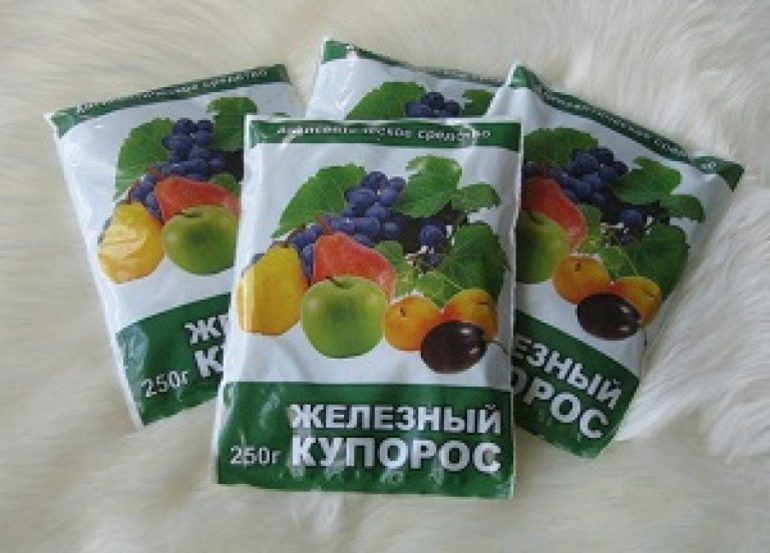
Content
Element availability in soil
Most soil iron (Fe) is firmly bound in the crystal lattice of various minerals. In the process of water and air erosion, its oxides and hydroxides are formed, which are absorbed by plants. Their solubility decreases sharply with increasing soil acidity. The total number of available items is reduced.
Depending on the so-called redox potential of the soil, iron oxides are present in trivalent or divalent form. Under conditions of insufficient oxygen content with a low redox process (wet soil), trivalent Fe ions are reduced to readily available Fe +2. In an air-enriched environment: for example, during drought, ferrous iron oxidizes to ferric.
This form is not available for assimilation by plants, so Fe +3 should be chelated to Fe +2 in the soil or root system (iron reductase). In addition, the ability of crops to absorb an element by 50% depends on the acidity (pH) of the soil. Bicarbonate, which is formed from carbon dioxide in soil water, is also important. Its high levels stop the acidification process and indirectly contribute to the inhibition of iron uptake. The content of this substance increases with increasing pH and water saturation.
 You may be interested in:
You may be interested in:In addition, the absorption and transport of iron may deteriorate with a high phosphate content. This element precipitates Fe both near the roots and in the vascular pathways of the plant with the formation of iron phosphates, thereby inactivating it. An adverse factor is also considered a high copper content. The range of chelating elements is closely related to the quantity and quality of organic matter. Therefore, a low humus content is synonymous with the inadequate presence of iron chelates.
Role in plant life
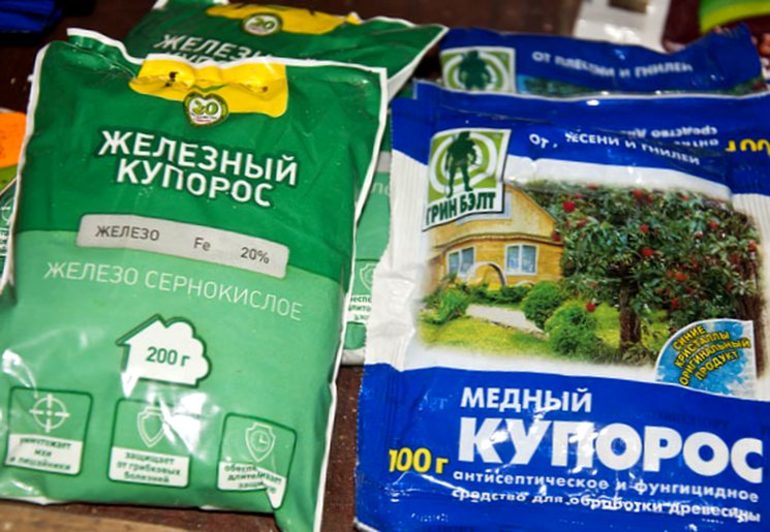
This element plays an important role in the process of plant respiration. Its deficiency always means a violation of the formation of chlorophyll. As a result, vegetation slows or stops, which affects the beauty and productivity. If iron is transported from the earth to plant cells in the form of Fe +3 citrate, then in leaf veins it is present in a physiologically inactive trivalent form.
During the transition from a part of the vessel to the leaf cell cytoplasm, ferric citrate is converted to the active divalent form. Inside the plant, the mobility of iron is not very high. For example, the nutrient does not shift from older leaves to younger ones. Therefore, its deficit is primarily observed on the youngest shootswhere the need for the presence of Fe for the formation of chlorophyll is very high.
The main functions of the element:
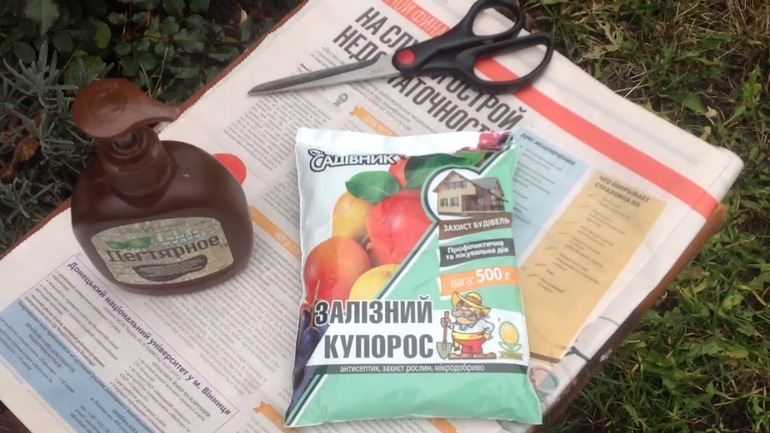
- It is the building block of numerous enzymes involved in the production of chlorophyll (about 80% is contained in chloroplasts, which indicates the central importance of this nutrient for the process).
- Responsible for the transfer of energy in photosynthesis (the conversion of light into chemical energy).
- It plays a role in the metabolism of nucleic acids, the restoration of nitrates, and protein synthesis.
- A significant amount of it is contained in mitochondria (“power plants” of cells).
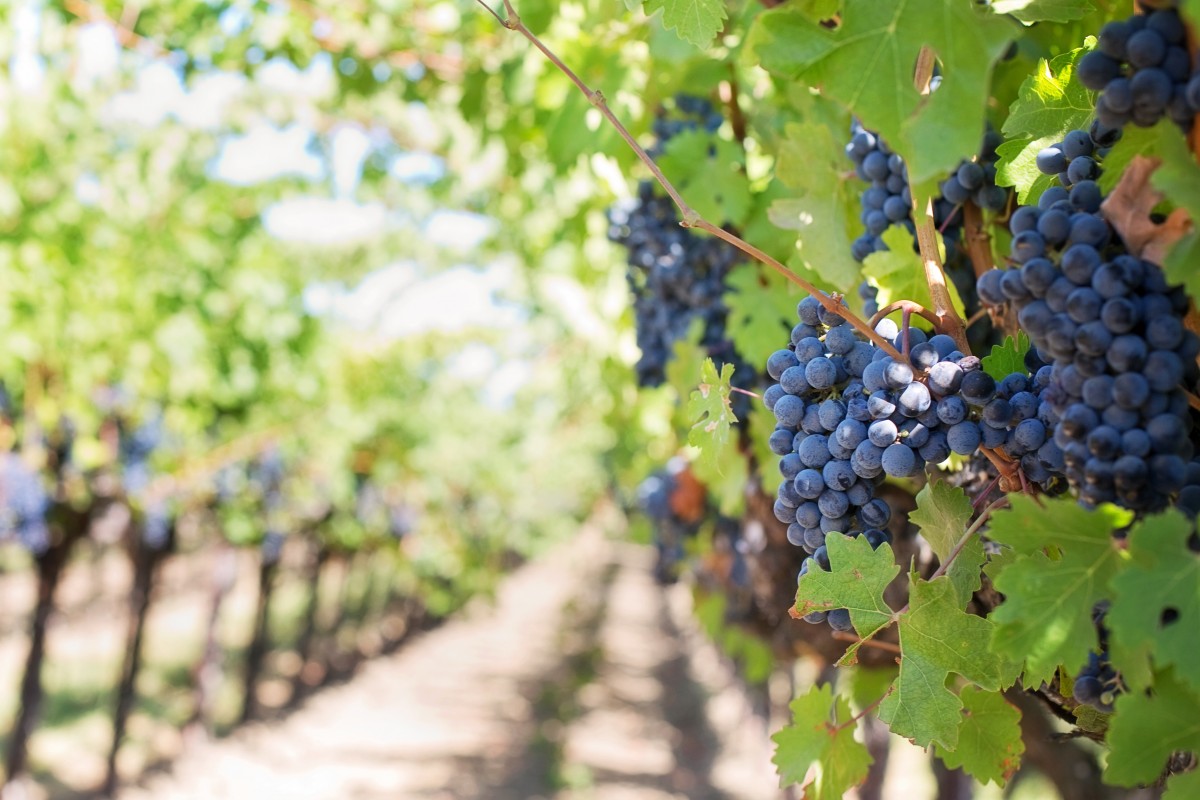 You may be interested in:
You may be interested in:The effects of chlorosis
A lack of iron always causes a depletion of the plant, as a result of which growth slows down and yield decreases. Classical chlorosis is characterized by a complete loss of chlorophyll in the youngest leaves. They turn yellow with a pale green vascular network. At the first stage, a few branches are affected. If you ignore the problem, the whole plant will turn yellow. In extreme cases, this leads to loss of foliage and death of individual branches or the whole plant.
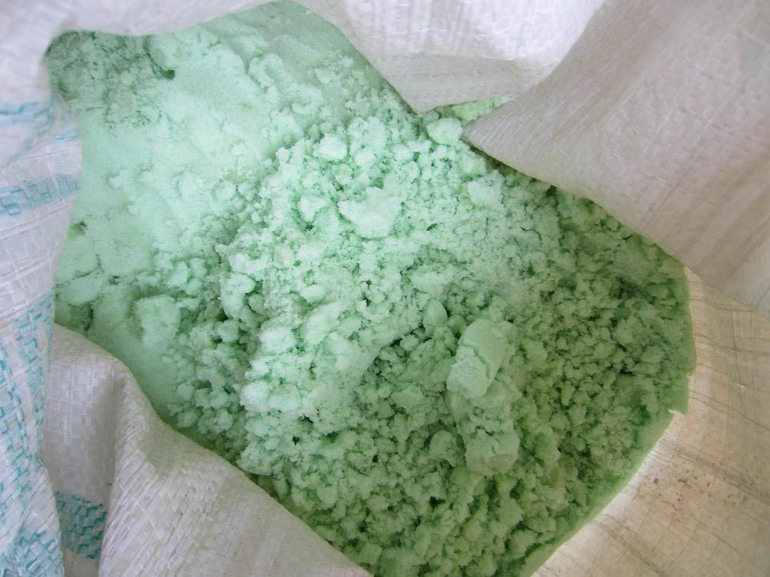
The mild symptoms of Fe deficiency are often not recognized as such. They can be observed in the following adverse environmental conditions:
- on heavy alkaline soils;
- in wetlands;
- in cold periods (as a result of slower growth of small roots and a decrease in Fe absorption).
Chlorosis is considered a violation of the balance of iron in the plant. Sometimes this violation is called calcareous chlorosis, since it is often found on calcareous soils or surfaces. You can also meet him:
- in dry areas;
- small humus and phosphate-rich soils;
- in crops with impaired root growth (compaction, rooting, high yields in the previous year).
Useful properties of iron sulfate
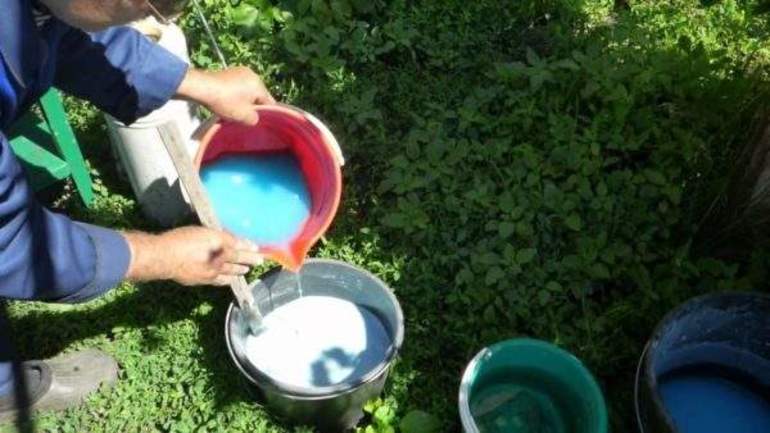
Iron sulfate or vitriol is the most popular remedy for gardening problems with Fe deficiency. It is a chemical compound (heptahydrate), the formula of which is FeSO4. It is produced in the form of ready-to-use water-soluble granules of greenish color and cannot be mixed in one solution with organophosphorus insecticides, as well as other decomposable agents in an alkaline environment.
Fertilizer is applied as recommended by the manufacturer. As a rule, the procedure is carried out every 4-6 weeks during the growing season from March to September. Granules are placed in moist soil with mandatory subsequent watering. It is advisable to carry out the treatment of plants with iron sulfate in autumn, summer or spring after analyzing the composition and acidity of the soil. This will help to more accurately identify the problem and reduce the extra cost of fixing errors.
Fields of application
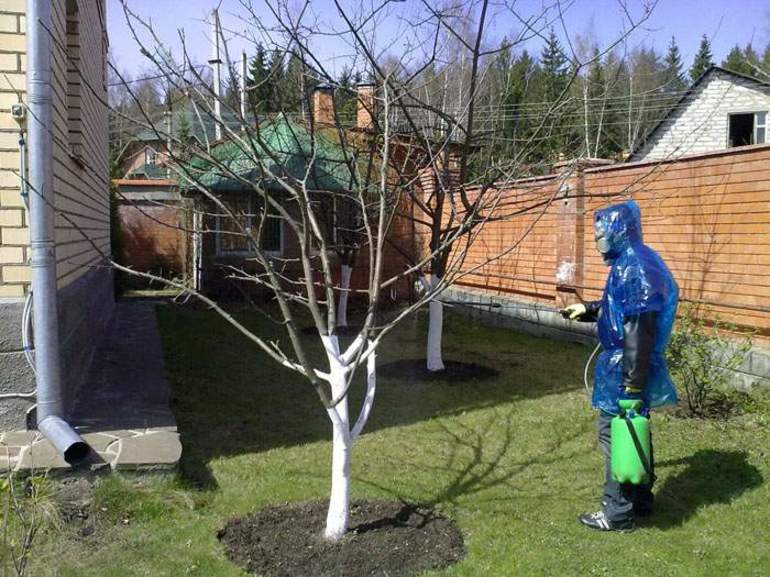
The substance is used not only for root top dressing, but also in the processing of ground parts of plants. It should be remembered that it has a high acidity, so it is not recommended to apply the drug to green leaves - getting it can cause burns. It is best used before the buds open in the early spring or after the leaves fall in the fall.
The tool is very effective in combating fungal infections, the foci of which can be dry leaves and branches that have fallen to the ground. For this reason autumn garden spraying iron sulfate should cover the soil around the plants.
Using FeSO4 is effective for solving the following tasks:
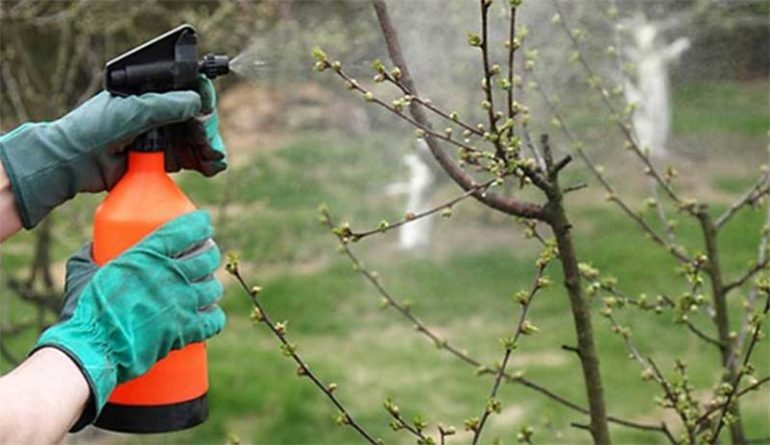
- processing the walls of basements and vegetable stores;
- chlorosis control;
- suppression of powdery mildew, anthracnose and gray rot;
- treatment of damage and cuts of trees, their disinfection;
- the destruction of mosses, lichens and fungal infections;
- treatment of spots on roses;
- pest control.
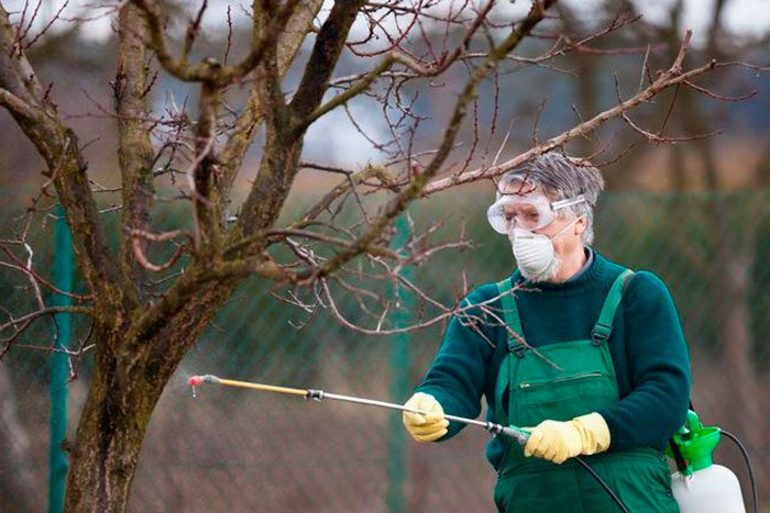 You may be interested in:
You may be interested in:Precautionary measures

Iron sulfate will not cause harm if you follow the safety rules when working with it. First of all, it is necessary to observe the recommended dosage. A solution with an increased proportion of the drug (5-7%) can be used exclusively before the growing season or after its completion. In spring and summer, the concentration of the substance can be no more than 1%. The bark of young trees is too thin and can only be sprayed once in the spring. Adult plants will not harm the additional treatment in the fall.
Processing the garden with iron sulphate in autumn and spring will help protect plants from becoming infected with infections and in pest control. If regular top dressing is carried out, then a sufficient amount of iron will fall into the soil in a form convenient for the root system. These measures will preserve the beauty of the plantings and provide a good harvest.

 Superphosphate: what is it and how to apply it
Superphosphate: what is it and how to apply it What problems can be expected from siderats?
What problems can be expected from siderats? Secrets of the collection, storage and use of eggshells in the garden
Secrets of the collection, storage and use of eggshells in the garden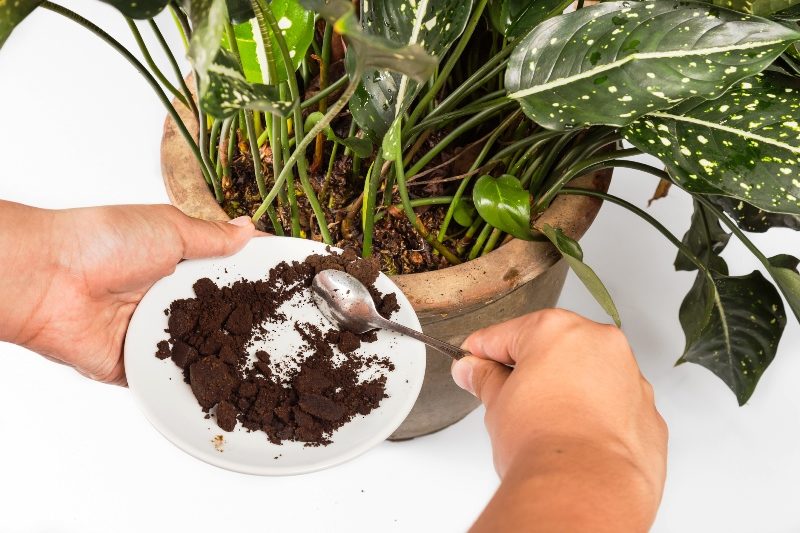 The most popular top dressing for indoor plants
The most popular top dressing for indoor plants